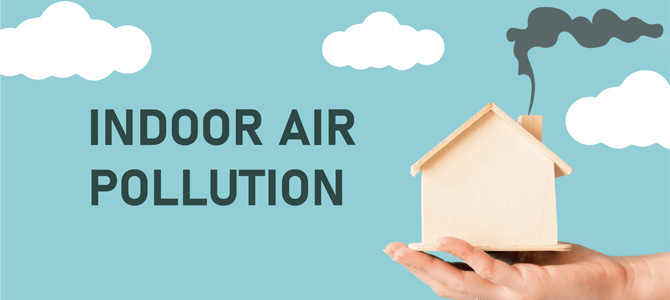
Indoor Air Pollution: Understanding the Risks and How to Reduce Them
Most people are aware of the risks of outdoor air pollution, but did you know that indoor air pollution can be just as harmful to your health? Indoor air pollution is a serious problem that affects millions of people worldwide. In this blog, we will discuss the sources of indoor air pollution, the health risks associated with it, and ways to reduce indoor air pollution.
Indoor air pollution can come from a variety of sources, including:
1. Building Materials: Certain building materials, such as paint, carpet, and furniture, can release volatile organic compounds (VOCs) into the air.
2. Household Products: Cleaning products, air fresheners, and pesticides can all contribute to indoor air pollution.
3. Tobacco Smoke: Smoking indoors can release a large amount of pollutants into the air, including carbon monoxide and nitrogen oxide.
4. Cooking: Cooking can release pollutants such as carbon monoxide and nitrogen dioxide, particularly if you are using a gas stove.
5. Mold and Mildew: Damp areas, such as bathrooms and basements, can harbor mold and mildew, which can release spores into the air.
Health Risks of Indoor Air Pollution:
Indoor air pollution can have serious health effects, particularly for people who spend a lot of time indoors, such as children, the elderly, and people with respiratory or cardiovascular problems. Some of the health risks associated with indoor air pollution include:
1. Respiratory Problems: Exposure to indoor air pollutants can cause or exacerbate respiratory problems such as asthma, bronchitis, and pneumonia.
2. Cardiovascular Problems: Indoor air pollution can also increase the risk of cardiovascular problems such as heart disease and stroke.
3. Headaches and Fatigue: Exposure to indoor air pollutants can cause headaches, fatigue, and other symptoms of poor indoor air quality.
4. Cancer: Some indoor air pollutants, such as radon and formaldehyde, are carcinogenic and can increase the risk of cancer.
Ways to Reduce Indoor Air Pollution:
1. Increase Ventilation: Proper ventilation is key to reducing indoor air pollution. Open windows and use exhaust fans to increase air flow and improve indoor air quality.
2. Use Natural Products: Choose natural cleaning products and air fresheners, and avoid using pesticides.
3. Test for Radon: Radon is a colorless, odorless gas that can seep into your home from the ground. Test for radon and take steps to reduce levels if necessary.
4. Maintain Humidity Levels: Mold and mildew thrive in damp environments, so it is important to maintain appropriate humidity levels in your home.
5. Use an Air Purifier: Air purifiers can help remove pollutants from the air and improve indoor air quality.
In conclusion, indoor air pollution is a serious problem that can have significant health effects. By taking steps to reduce indoor air pollution, you can create a healthier environment for you and your family. Remember to increase ventilation, use natural products, test for radon, maintain humidity levels, and use an air purifier to improve indoor air quality.